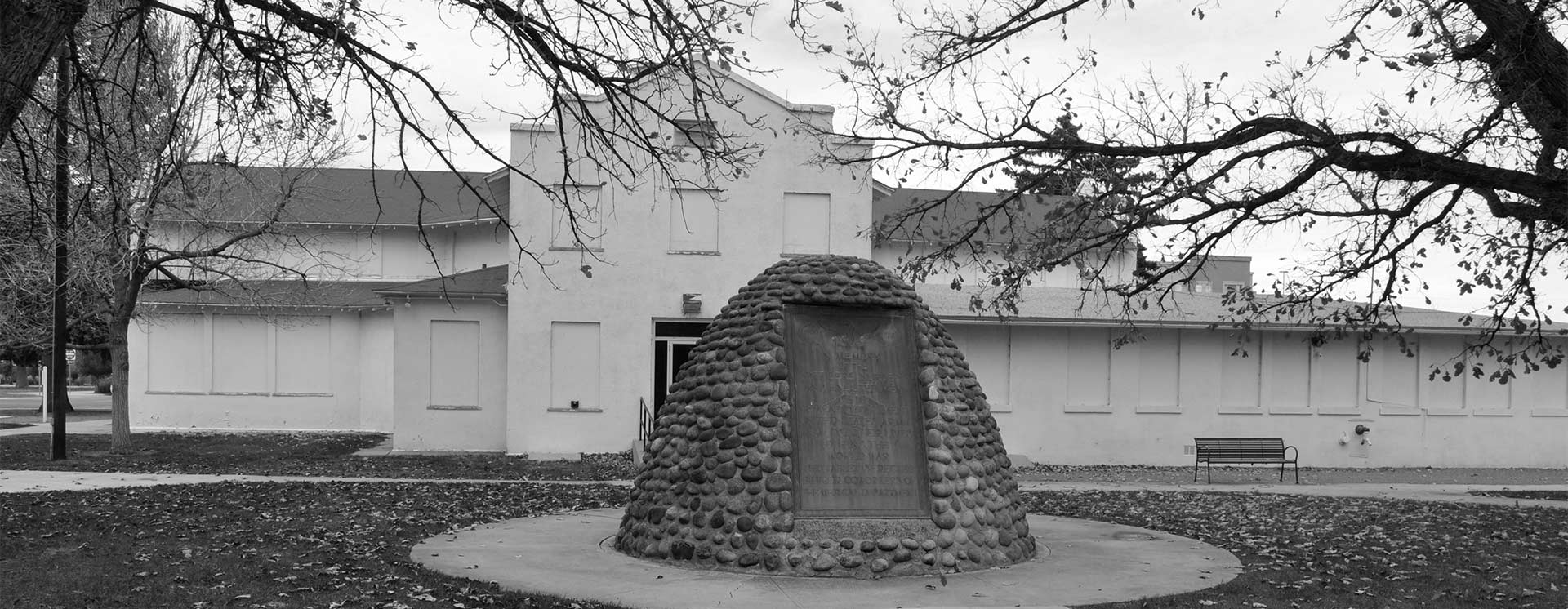
World War One Sites - The NETWORLD Database
Water tower of the Marchtrenk POW camp, Upper Austria, Austria
The water tower of the POW camp was built in 1915/16. Today it is situated in the middle of the residential area of the City of Marchtrenk.
Austria, Upper Austria
Type of WWI-heritage
- Military Infrastructure
- POW-camp
Dimensions
The 24-metre high concrete construction is subdivided into a truncated cone-shaped base, a 10-sided, multi-storey tower and the protruding circular water container with its flat conical canopy.
State of repair/preservation
The water tower is partly in need of refurbishment.
Historical WWI Context
Already in November 1914 representatives of the Austro-Hungarian military and civil authorities met in the Welser Heide for inspecting the site of the subsequent Marchtrenk camp. Austro-Hungary then began construction of the camp in the Upper Austrian community in 1915 where POWs of various nationalities were intended to be housed. The barrack settlement stretching along a length of around three kilometres and consisting of three sub-camps (Camps I, II and III) was capable of accommodating up to 35,000 persons, and had its own infrastructure to supply and “manage” the military prisoners. The water tower was constructed in 1915/16 by several companies – including the Allgemeine österreichische Baugesellschaft (today: PORR AG). It was intended to supply the camp with clean drinking water.
Following World War II a residential settlement was constructed on the former camp grounds for expelled Transylvanian Saxons and Danube Swabians (the “Roithner settlement/camp”).
Historical Images
State of legal protection
The water tower is heritage-protected.
Owner
The object belongs to the Marchtrenk municipal council.
Kind of cultural use of WWI
The water tower houses a small permanent exhibition about the history of the Marchtrenk POW camp. The military cemetery also commemorates the events of World War I and is regularly visited by Russian and Italian delegations among others. A path of peace with 20 stations is also dedicated to two main themes – the Austro-Hungarian POW camp and the immigration of ethnic Germans after World War II. Tours are available for groups.
Further information:
www.museumsverein-marchtrenk.at
The former Roman Catholic church in the centre of the borough of Marchtrenk contains a fresco painted by prisoners of war. It is located below the organ gallery and depicts the Austro-Hungarian POW camp.
An “iron table” was also constructed by POWs and can be viewed in the museum in the water tower. A nail could be hammered into the artistically designed object after a donation for the war welfare fund. The initial impulse for this was supplied by a “soldier in iron” presented in Vienna on 6 March 1915. Soon afterwards, wooden figures were set up in many villages and towns in the Austro-Hungarian monarchy and nailed following a donation. In addition to soldiers, military signs and crosses, other objects were also used for nailing purposes, for example tables and doors. The number of nailing actions suddenly increased from April 1915 – they also fulfilled an important social function by appealing to the common call for holding out. The time between July 1915 and April/May 1916 was deemed to be the “zenith” of these nailing campaigns.
Opening
Further information:
Museumsverein Marchtrenk: www.museumsverein-marchtrenk.at
Entrance Fee
Further information: Museumsverein Marchtrenk: www.museumsverein-marchtrenk.at
Information regarding cities, villages, other touristic attractions (non-WWI) nearby
Further information:
Land Oberösterreich: www.oberoesterreich.at
Accomodation
Further information:
Land Oberösterreich: www.oberoesterreich.at
Public Transport
The borough of Marchtrenk is well-connected by the public traffic network.
Further information:
ÖBB: www.oebb.at
Further information sources
Publications:
Erwin Prillinger, Das k.u.k. Kriegsgefangenenlager von 1914 bis 1918 und der Kriegerfriedhof in Marchtrenk, hg. v. Museumsverein Marchtrenk – Welser Heide. Marchtrenk (2013).
Hans-Christian Pust, Vergessenes Phänomen. Kriegsnagelungen in Österreich, Deutschland und darüber hinaus, in: Christian Rapp & Peter Fritz (Red.), Jubel & Elend. Leben mit dem Großen Krieg 1914–1918. Ausstellungskatalog, hg. v. d. Schallaburg Kulturbetriebsges.m.b.H., Schallaburg (2014), S. 298–301.
Julia Walleczek, Hinter Stacheldraht. Die Kriegsgefangenenlager in den Kronländern Oberösterreich und Salzburg im Ersten Weltkrieg, Dissertation Universität Innsbruck (2012).
Julia Walleczek-Fritz, Kriegsgefangenschaft und Kriegsgefangenenlager in Österreich-Ungarn im Ersten Weltkrieg, in: Österreichische Zeitschrift für Kunst und Denkmalpflege, Heft 3/4 (2015), S. 273–282.
Other heritage sites nearby
- “Russian cemetery” – camp cemetery of the former Grödig POW camp, Salzburg, Austria
- Bridgehead Krems, base Göttweiger Mountain, Lower Austria, Austria
- Camp cemetery of the former Marchtrenk POW camp, Upper Austria, Austria
- Memorial for Jewish soldiers of World War One and War memorial on the central cemetery of Vienna, Austria
- Russian Orthodox chapel in Zagging, Lower Austria, Austria
- Hessen Memorial in Linz, Upper Austria, Austria
- Crypt of Archduke Franz Ferdinand in Castle Artstetten, Lower Austria, Austria
Museums Private Collections
Further information:
Museumsverein Marchtrenk: www.museumsverein-marchtrenk.at
Water tower of the Marchtrenk POW camp, Upper Austria, Austria
48.199056312294246 14.129994364468416 fileadmin/res/images/layout/standar-marker.pngLocation


